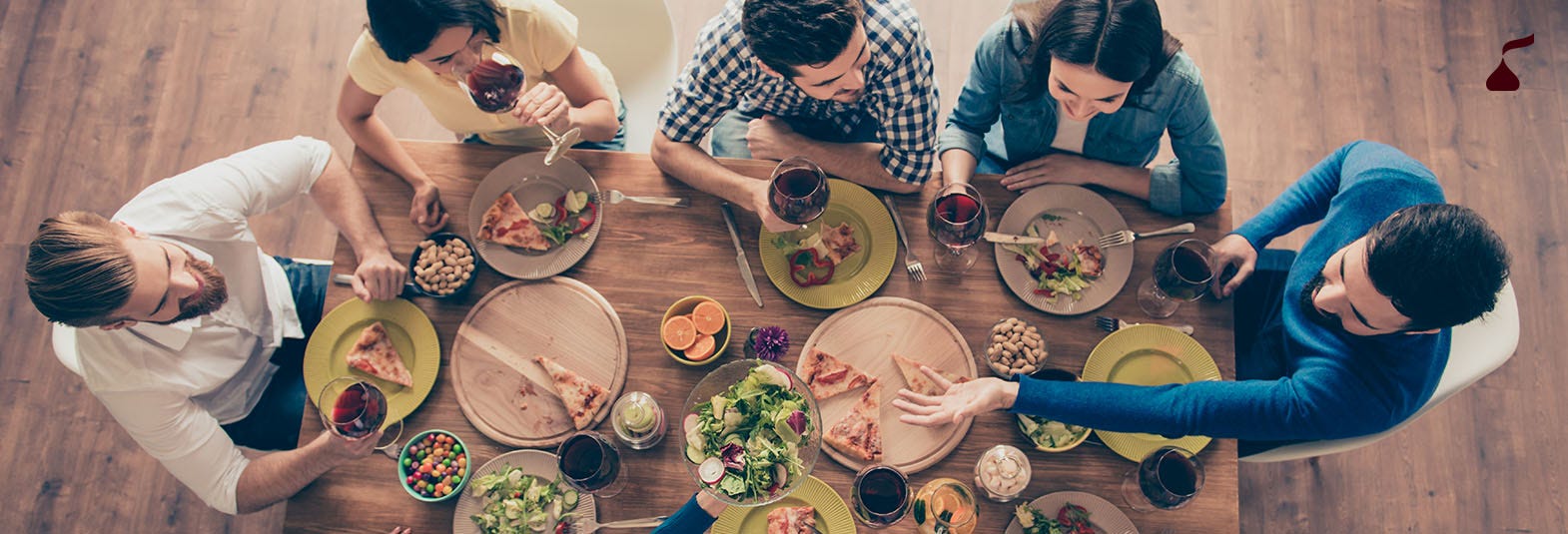Snacks and the Future of Dinner
Despite changing technology and growing options for restaurant delivery and dining out, consumers are still choosing to go to the store or make purchases online and bring groceries home. Any time a consumer is shopping for dinner, after all, there’s an opportunity for a snack or sweet treat for dessert to catch their eye, so we are highly interested in learning more.
After reviewing a report called “The Future of Dinner,” by market research firm the NPD Group, we talked to the author of the report, David Portalatin. Here are five things we learned about how consumers are shopping for dinner—and what that might mean for snacking.
They’re making ‘blended’ meals. A meal doesn’t have to be 100 percent made from scratch for today’s cooks to consider it “homemade.” Portalatin says that consumers are turning more and more to what he calls the “blended” meal, where one item may have been prepared by the grocery store’s deli, and the other items were made at home. That could mean a shopper picks up a prepared side, like mashed potatoes, or a prepared protein, like a rotisserie chicken, and then makes other items to go with it, like roasted vegetables, a salad, macaroni and cheese—and maybe chocolate or candy items that can be incorporated into a fun dessert. “One of the things we tell food service operators is think about your menu and assortment of offerings, and how can you play a role in this concept of the blended meal,” says Portalatin. “I think you’ll see grocery retailers also enhance their prepared foods or their ready-to-eat options as well as components of that blended meal.”
“Cooking in the American kitchen is alive and well today, contrary to popular mythology.”
- David Portalatin
They’re less concerned about getting the individual parts for their dinner and more focused on getting the meal as a whole. Shopping by ingredient can feel so tedious, which is why shopping by the meal, itself, appeals to consumers, says Portalatin. One way stores can offer that option is through their online ordering presentation, where items can be grouped by need and consumers can search accordingly, like “30-minute dinner,” “date night” or “birthday dinner. “I just think there’s a lot of opportunity in the digital space to transcend the shelf,” says Portalatin. A store could also have a section online for dessert options, with recipes and ideas for things like easy weeknight desserts (we’re loving these Mini KISSES peanut butter blossoms.)
They’re shopping in a variety of modes. Just because a person shops online doesn’t mean he or she won’t visit the physical store, says Portalatin. “We know that 16 percent of consumers have shopped online for groceries in the last 30 days. Virtually all of them will also go into the brick and mortar store,” he says, citing NPD Group research. That, alone, is good news for unplanned purchases—and the snacking industry. Portalatin says each outlet needs to have an omnichannel strategy and work to meet the consumer where they are. “The more seamless it can be between the digital and the in-store the better, because what you really want to do is be a problem solver for that consumer,” says Portalatin.
Millennials embrace cooking at home. The millennial stereotype often revolves around a person who eats out more frequently than not. Portalatin says that his research shows that while millennials do, indeed, eat at restaurants frequently, they do so less than the previous generation at that age. In fact, he says that millennials are a “foodie” generation who enjoy cooking dinner when time allows for it. “Today, we have television shows where 12-year-old kids try to prepare Michelin-star quality meals,” he says. “Everybody’s a foodie, and so we’re seeing the millennials—even the younger millennials—a little bit more developed in spending more time in the kitchen,” he says. And they’re not necessarily making large meals for dinner. A previous study[1] by NPD Group found that millennials have a tendency to consume snack foods as their meal.
Generation Z is looking for simplicity and fluidity. Portalatin remembers when he was growing up, the dinner plate frequently held a protein, a vegetable or two and a slice of bread. Today, ingredients are more likely to be combined in, say, a grain bowl, tacos or a salad topped with protein. Portalatin says this more cohesive approach is especially popular with Gen Z, who may make something like a chicken wrap for dinner. “It’s got some protein in it. It’s got some vegetables in it. It’s hand-held, it’s portable,” he says. As with any generation, he says Gen Z’s notion of dinner is inspired by the way they were raised. “That’s part of growing up with a very diverse world view, being digitally native and having information from all over the world and cuisines from all over the world and just being willing to redefine what dinner even means,” says Portalatin. In fact, some in Gen Z may be happy with simply having a snack for dinner[2], just like their millennial counterparts.
Any kind of shopping trip can lead to a snack purchase. By understanding shopping behavior in all categories, retailers can help offer the flavors and convenience they crave. “In order to grow, we really need to lean into a better understanding of our consumer,” says Portalatin.
Want to learn more about how consumers are shopping for snacks? Download our review of the biggest snacks retail trends and insights, “Experience and Convenience in a Shopper’s World.”
[1] “Snack Foods are Increasingly Consumed at Main Meals and Gen Zs and Millennials Will Drive This Trend Over the Next Decade,” NPD Group, 2017.
[2] “Snack Foods are Increasingly Consumed at Main Meals and Gen Zs and Millennials Will Drive This Trend Over the Next Decade,” NPD Group, 2017.
